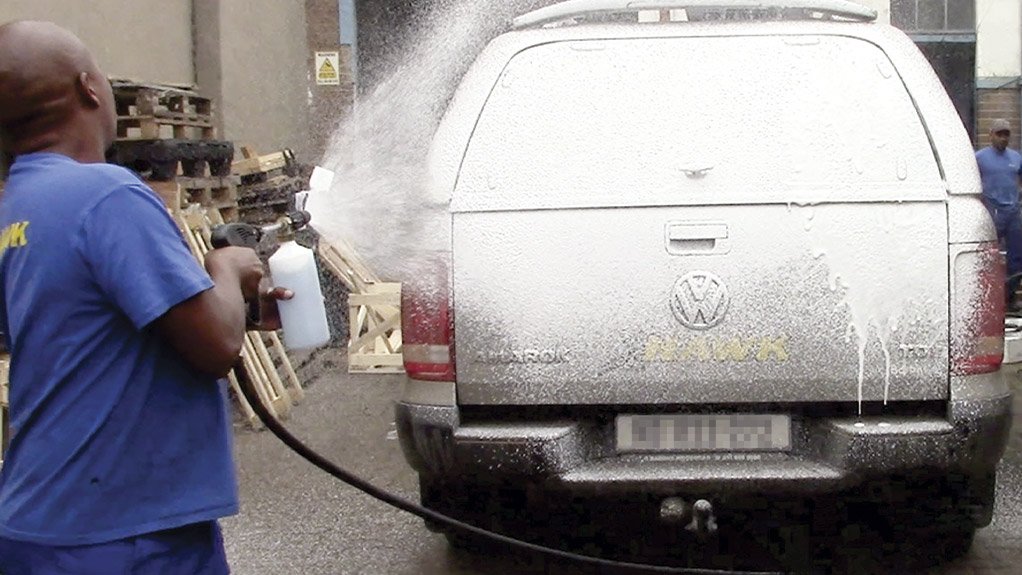
(Virtual Showroom): Foamed chemicals are used for various applications and industries where high-pressure pumping equipment is employed. Most commonly, foam allows chemicals to cling to certain surfaces, giving them longer contact time with the material. This helps the chemicals do a better job. A leading manufacturer of high-pressure washers, Hawk Pumps, provides a more detailed breakdown on foaming in high-pressure cleaning.
Typically, foam is used:
- To sterilise equipment, conveyors, walls and floors in food and beverage factories and abattoirs.
- To sterilise poultry houses, to ward off a range of diseases.
- As a degreasing agent in carwashes.
- As a degreasing agent for heavy equipment – typically when cleaning before maintenance.
A quick tip on achieving the most effective foam:
The chemical must contain a strong surfactant (foaming agent) and a lot of air has to be entrained.
Four chemical foaming methods:
1. A foaming bottle on the end of the gun lance
The chemical is picked up and mixed with the water jet using a container fitted to the foamer with a venturi. As this mixture sprays from the unit, it draws air from a secondary venturi effect. This creates a good but slightly wet foam. This method can be used instead of other equipment like compressors and allows for a controlled volume of chemicals per application.
2. A chemical injector is fitted to the outlet of the pump, before the hose
When a mixture sprays from the gun it goes through a foaming lance, which sucks in the air. This can provide a variable thickness of foam as the chemical injector has an adjustable inlet valve. This works well in chicken houses, where even the ceiling needs to be sterilised.
3. A wall-mounted foamer unit
This is fed with tap pressure water into a chemical injector, which is then aerated from a compressor feeding a length of 20mm hose. This foam is thick, and this method is popular among carwash companies.
4. Pot foamers
A mobile stainless-steel tank containing premixed water/chemicals with a hose and gun is fed by a compressor. This method is suitable for most applications and uses less compressed air than the wall-mounted foamer.